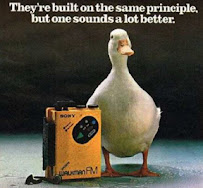"SoniStream" For Music-Related Software Dilutes Famous "SONY" Mark, Says TTAB
The Board sustained an opposition to registration of the mark SoniStream (standard characters) for "Downloadable computer software for Internet and broadcast radio scheduling and audio playout," finding that the proposed mark dilutes by blurring the "exceedingly famous" mark SONY, long used in the consumer and professional electronics field, including audio, video, computer game, and mobile phone products, electronic components, and medical-related equipment and professional solutions. Opposer is also a widely known and leading entertainment company in the motion picture, television, music, gaming and online entertainment spaces. Sony Group Corporation v. Neil A. Campbell, Opposition No. 91245851 (October 28, 2022) [not precedential] (Opinion by Judge Christopher Larkin).
Applicant Campbell, appearing pro se, admitted that "the SONY mark is famous among the general U.S. public." In any event, "Opposer’s evidence bearing on the fame of its SONY mark . . . checks all of the boxes for fame under Section 43(c)(2)(A) of the Trademark Act."
Campbell's argument regarding the dissimilarity in pronunciation of "Sony" and "Soni" "[got] most of the parties' attention."
They dispute whether “Soni” is likely to be pronounced “sew-knee,” like Opposer’s mark, with a long “e” sound (ē) as in the name “Tony” and the word “pony,” making Applicant’s mark as a whole sound like “Sonystream,” or “saw-nĕ,” “exactly as it is pronounced in the word sonic.”
Crawford provided evidence from a handful of people who pronounced "SoniStream" with a short "i" sound, as in "sonic." Opposer's linguistic expert, however, buttressed the Board's conclusion that "while 'SonyStream' is certainly not the only possible pronunciation of 'SoniStream,' and may not even be the most likely one, it is at least among 'all the reasonable possibilities' for its pronunciation, and we must consider it in our analysis of the similarity of the marks in sound." And so, the Board found that "The pronunciation of Applicant’s 'SoniStream' mark as 'SonyStream' would instantly "'trigger consumers to conjure up' Opposer’s famous SONY mark."
Four of the factors used to determine whether Applicant’s mark SoniStream is likely to dilute Opposer’s famous SONY mark by blurring support a finding of likely dilution, while the other two are neutral. Applicant’s SoniStream mark is sufficiently similar to the SONY mark to trigger consumers of Applicant’s goods to conjure up Opposer’s famous mark; Opposer’s mark is a coined term and is thus inherently (and highly) distinctive; and Opposer’s use of its famous SONY mark has been at least substantially, if not entirely, exclusive in the United States. Applicant’s innocent adoption of his mark, and the absence of any actual association between the marks owing to the fact that Applicant’s mark has not been used, do “not change the result, given our determinations regarding the other dilution factors.”
And so, the Board sustained Opposer's dilution claim, declining to consider Sony's Section 2(d) likelihood of confusion claim.
Read comments and post your comment here.
TTABlogger comment: By the way, how do you pronounce "sonic." I'm from Chicago and I say "sah-nick." Bostonians say "saw-nick."
Text Copyright John L. Welch 2022.


3 Comments:
As a fellow Midwesterner, I can vouch for the "sah-nick" pronunciation.
You know your case is doomed when the Board says the registered mark is exceedingly famous and among the most widely recognized brands in the United States. Or when you decided to use a variant of SONY.
Why on earth did the TTAB reach out to decide the case on dilution when it would have been a slam dunk on 2(d) likelihood of confusion? "We sustain the opposition on the basis of Opposer’s dilution claim and do not reach its likelihood of confusion claim." No explanation for this amazing statement. Since when is dilution the go-to legal theory? Like the Russian general saying, "Oh why bother with all this artillery fire nonsense... fire up the nuke missiles!!!" The TTAB needs a tutorial on what the dilution law is all about and how it works.
Tom McCarthy
Post a Comment
<< Home